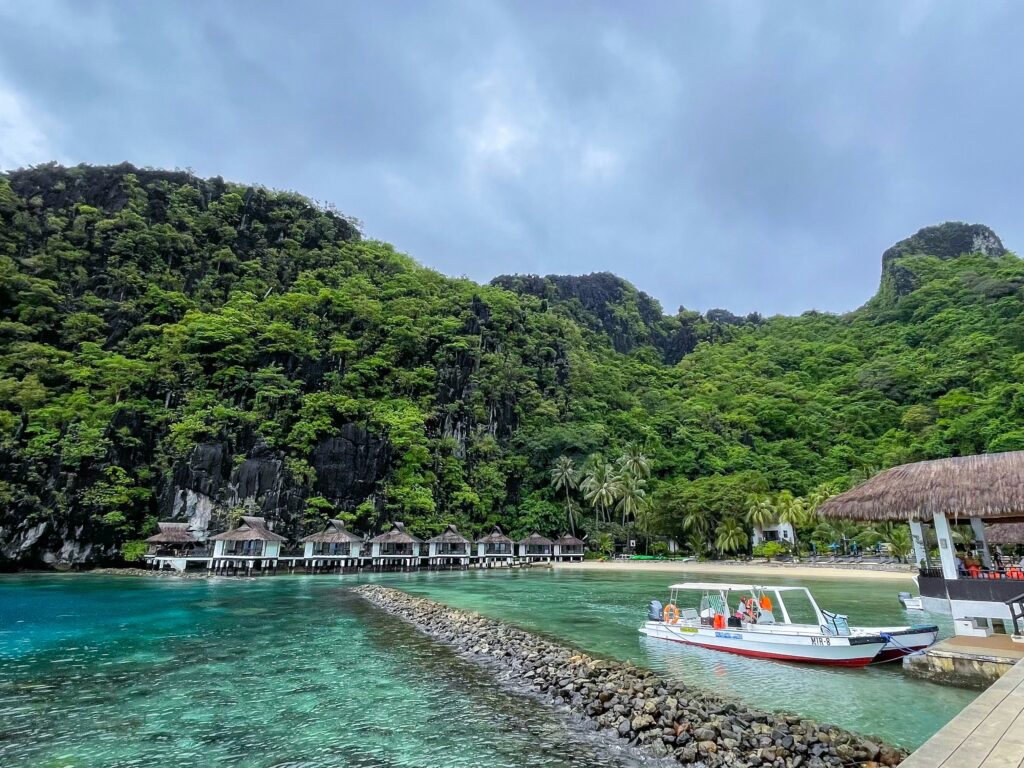This article explores Southeast Asia’s vulnerability to climate change, its impact on natural resources, economic challenges, policy responses, and the need to embrace sustainability and a net-zero lifestyle.

PHOTO: Wiroj Sidhisoradej on Freepik
As the world’s gaze increasingly shifts to the urgent call of climate change, few regions find themselves more in the line of fire than Southeast Asia. A vibrant mosaic of bustling urban spaces, arenas of rich biodiversity, and centuries-old cultural heritage, Southeast Asia finds itself at a critical juncture, balancing on the edge of environmental challenges.
The region is not only facing the worst of climate change’s impacts, but it’s also one of the most vulnerable regions of the world due to its geographical position, developmental transition, and population dynamics.
A Region Under Severe Threat
Imagine soaking in the bustling beauty of Jakarta’s skyline, the breezy coastlines of Thailand, or the serene landscapes of the Mekong Delta. Now, imagine all of them under siege from an unstoppable force that neither acknowledges borders nor negotiates terms – the grim reality of global climate change.
Southeast Asia, boasting an assortment of dynamic landscapes, buzzing metropolises, and cultures steeped in history, is facing a tough challenge: global climate change.
With its densely populated coastal cities, fledgling economies, and deeply entrenched social inequalities, Southeast Asia (SEA) is alarmingly vulnerable to the intensifying whims of our changing climate.
Disasters as Evidence
The region has witnessed devastating climate and weather-related disasters, such as the intense flooding in Hoi An, Vietnam, exacerbated by typhoon-driven rains, which highlight the acute exposure of SEA to climate-related challenges.
Vietnam, Myanmar, the Philippines, and Thailand rank among the countries most affected by climate change over the past two decades, experiencing significant jumps in greenhouse gas emissions and facing dire economic impacts. These include potential reductions in GDP due to damage in critical sectors like agriculture, tourism, and fishing.
Furthermore, Southeast Asia is confronted with the dual challenge of adapting to climate change impacts and altering development strategies to mitigate further environmental damage.
The reliance on coal and deforestation, along with urbanization, contributes to and magnifies these challenges, making the region one of the world’s most vulnerable to weather extremes and rising sea levels.
A Call to Collective Action
Scientists and regional development organizations, like the U.S. Agency for International Development (USAID), warn that without significant action to reduce greenhouse gas emissions, increase clean energy usage, and build climate resilience, Southeast Asia faces an increasingly grim future.
Intense and unpredictable weather events, such as heatwaves, floods, and droughts, are expected to become more common, urging immediate and cooperative regional action to mitigate these risks and protect vulnerable communities.
This vulnerability is manifested through burgeoning issues such as rising sea levels, stifling heat waves, sudden floods, prolonged droughts, and increasingly erratic weather events that pose unique threats to Southeast Asia’s environmental equilibrium and socio-economic progress.
Climate Crisis Threatens Southeast Asia’s Biodiversity
Rich in an array of terrestrial and marine ecosystems — from extensive archipelagos and deep river basins to dense rainforests — Southeast Asia stands as a colossal amphitheater of biodiversity. However, the ravages of climate change are putting a colossal strain on this ecological construct, threatening to annihilate the rich biological tapestry and undermine the region’s deeply interwoven socio-cultural fabric.
From the coral reefs in the Philippines, succumbing to bleaching from increased sea temperatures, to the mangrove forests in Vietnam grappling with the salinity changes brought by rising sea levels, Southeast Asia’s unique ecosystems face a dire confrontation.
These vital natural resources, essential for both biodiversity and the livelihoods of local communities, are under significant threat. The situation underscores the critical need for targeted conservation efforts and immediate climate action to preserve the region’s irreplaceable ecological heritage amidst the growing challenges of climate change.
Climate Change Impacting Southeast Asia’s Economy

PHOTO: Freepik
The economic ramifications of climate change in Southeast Asia are nothing short of critical. With their economies heavily reliant on agriculture and coastal infrastructure, the nations within this region are forced to bear the brunt of an evolving, relentless global climate change landscape.
Adapting to these changes carries an astronomical financial burden while potentially undermining decades of developmental progress. For instance, Southeast Asian farmers are grappling with unpredictable weather patterns and soil degradation hindering crop yield, while coastal cities face threats from sea level rise, daunting them with the prospects of relocating or investing heavily in protective infrastructure.
With the dire need for expansive sustainability practices and proactive net-zero living, global cooperation is imperative to alleviate this economic strain and catalyze the region’s transition to a greener future.
Changing the Course: Regional Policies & International Support

Image: Freepik
Southeast Asia is actively addressing the challenges of climate change through various initiatives, policies, and international collaborations aimed at reducing carbon emissions and enhancing sustainability.
Energy Transition
The region is focusing on energy efficiency, renewable energy investments, and lower-carbon public transport to confront climate change impacts. The Asian Development Bank (ADB) is supporting these efforts by promoting energy efficiency, investing in renewable energy, and assisting in mainstreaming climate change across different sectors.
This approach aims to develop a sustainable, climate-resilient, and low-carbon economy in Southeast Asia.
Policy and Research
The Climate Change in Southeast Asia Programme (CCSEAP) established by the ISEAS-Yusof Ishak Institute is another crucial initiative, focusing on understanding climate change impacts and policy responses in the region.
Through annual surveys like the Southeast Asia Climate Outlook Survey, the programme gauges regional perspectives on climate change issues, including adaptation, mitigation, and policy.
Technical Insights
These efforts are complemented by comprehensive studies like the “Accelerating the ASEAN Power Grid 2.0” and “Planning Southeast Asia’s Decarbonisation Pathways,” which offer insights into the technical and policy challenges of energy transition.
Aid and Investment
Additionally, international aid and financial investments play crucial roles in supporting Southeast Asia’s journey towards climate resilience. These include capacity-building initiatives, technological transfers, and funding for climate-friendly projects, essentially advancing the region’s sustainability goals.
However, despite these initiatives, Southeast Asia faces significant obstacles in its decarbonization efforts. The region’s energy demand is expected to rise sharply, with projections indicating a substantial increase by 2050.
Economic Pressures
National budgets strained by the Covid-19 pandemic, supply chain disruptions, and energy price hikes further complicate the transition to renewable energy. Most countries in the region have set decarbonization goals for 2050 but lack detailed implementation plans, particularly regarding financing the transition from coal to renewable energy sources.
The estimated cost of this transition is significant, with Southeast Asia requiring at least $367 billion over the next five years to meet decarbonization targets. The complexity of securing this financing, alongside regulatory uncertainties, poses a formidable challenge.
Projections and Pathways to Climate Resilience
While Southeast Asia grapples with the current impacts of climate change, future projections based on ongoing trends and policies paint a picture that necessitates urgent action.
Southeast Asian countries, recognizing their vulnerability to climate change, are taking significant steps to become more climate resilient, in line with their commitments under the Paris Agreement.
Global Solidarity
Key efforts include strengthening the region’s power system, accelerating the deployment of clean energy technologies, and integrating satellite technologies for better disaster management and decision-making related to natural resources and environmental challenges.
All Southeast Asian countries are parties to the Paris Agreement, which sets a global action plan to limit global warming to well below 2°C, aiming for 1.5°C. This landmark agreement emphasizes the need for economic and social transformation based on the best available science, with countries submitting their national climate action plans, known as nationally determined contributions (NDCs), to outline their efforts in mitigating climate change and adapting to its effects.
Toward Net-Zero
An absolute shift towards a net-zero lifestyle, including a collective commitment to sustainable and renewable practices, is paramount. Governments, corporations, and individuals need to prioritize sustainability in policymaking, corporate strategies, and everyday living. International cooperation is crucial, merging resources and expertise to ensure a sustainable future.
Such global and regional actions can equip Southeast Asia with the necessary resilience and adaptive capabilities to surmount the growing challenge of climate change and enable the region to continue its journey towards net-zero living.
You Have a Role for a Sustainable Future
As inhabitants of this precious planet, embracing sustainability, fostering a net-zero lifestyle, and actively addressing the realities of climate change are no longer optional, but a fundamental responsibility. This call to action is more pressing for regions like Southeast Asia, standing on the frontline of the climate change battleground.
Every effort, however small, has far-reaching impacts – from adopting sustainable architecture designs in our homes to supporting climate-resilient policies, we all play a vital part. Let’s pledge today to collectively challenge climate change, and forge a path toward a prosperous, sustainable, and resilient Southeast Asia.
To know more about BillionBricks and our net-zero homes and communities, please email us at hello@billionbricks.org.
If you’re interested in further exploration of climate change, be sure to check out another article that provides additional insights. Read: Building Resilience: Addressing Climate Challenges in Thailand and Indochina.
Resources:
-
Justin Sentian et. al. Climate change scenarios over Southeast Asia, Retrieved from https://www.apn-gcr.org/bulletin/article/climate-change-scenarios-over-southeast-asia/
-
Tossielo Tiemann and Sabine Douxchamps. Opportunities and challenges for integrated smallholder farming systems to improve soil nutrient management in Southeast Asia. Retrieved from https://www.sciencedirect.com/science/article/pii/S2772655X23000381
-
Asian Development Bank. ADB in Southeast Asia. Retrieved from https://www.adb.org/where-we-work/southeast-asia
-
GGI Insights. Global Sustainability: Lasting Impact Through Scalable Action. Retrieved from https://www.graygroupintl.com/blog/global-sustainabilityviber
-
Open Access. ASEAN risks losing 35% GDP by 2050 from climate change. Retrieved from https://www.openaccessgovernment.org/asean-climate-change/123591/
-
Climate Change in Southeast Asia Programme. Retrieved from https://www.iseas.edu.sg/programmes/climate-change-in-southeast-asia-programme/.
-
USAID/ Confronting the Climate Crisis in Southeast Asia. Retrieved from https://www.usaid.gov/asia-regional/fact-sheets/confronting-climate-crisis-southeast-asia-regional-approach.
-
ScienceDirect. Opportunities and challenges for integrated smallholder farming systems to improve soil nutrient management in Southeast Asia. Retrieved from https://www.sciencedirect.com/science/article/pii/S2772655X23000381.
-
BillionBrivks. Paris Climate Agreement: Is the World Saved Now in 2023?. Retrieved from https://billionbricks.org/updates/paris-climate-agreement-is-the-world-saved-now-in-2023


